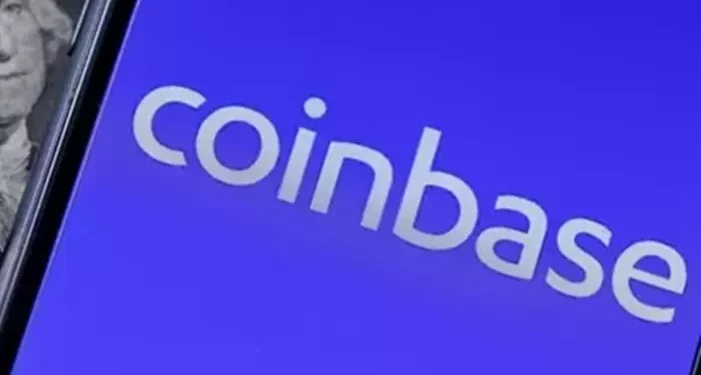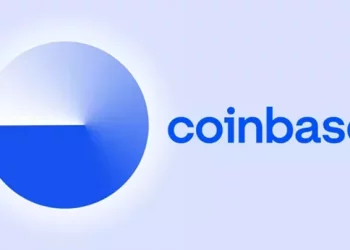Coinbase is one of the most popular and user-friendly cryptocurrency exchanges in the world. It allows individuals to buy, sell, and trade a variety of cryptocurrencies like Bitcoin, Ethereum, and Litecoin, among others. However, before diving into the world of cryptocurrency trading, it’s important to understand the costs involved. One of the key fees that users often encounter on Coinbase is the fee for selling their cryptocurrencies. In this article, we will break down how much Coinbase charges for selling, how these fees are calculated, and what users can do to minimize their costs.
Understanding Coinbase Fees
Coinbase charges different types of fees based on various factors such as the payment method, the location of the user, the cryptocurrency being traded, and the amount being sold. Before we delve into the specifics of the selling fees, let’s first get an overview of Coinbase’s fee structure. Coinbase typically has two main types of fees:
Transaction Fees
These are fees Coinbase charges for processing the buy or sell orders. They depend on the amount of cryptocurrency traded and the payment method chosen.
Spread Fees
This is the difference between the buy price and the sell price of a cryptocurrency. It reflects the market fluctuation, as well as Coinbase’s profit margin. The spread fee is not explicitly shown, but it can affect the overall cost of trading.
How Coinbase Charges for Selling Cryptocurrencies
1. Transaction Fees
When selling on Coinbase, users are subject to a transaction fee that varies depending on the size of the transaction and the method of payment. These fees are typically calculated as a flat rate or as a percentage of the transaction, based on the value of the sale and the country of residence of the user.
Flat Transaction Fee
For smaller transactions, Coinbase charges a flat transaction fee, which can range between $0.99 and $2.99. This flat fee depends on the transaction size and is applicable for sales that are less than $200. For instance:
- Sales under $10: Coinbase charges a fee of $0.99.
- Sales between $10 and $25: The fee is $1.49.
- Sales between $25 and $50: The fee is $1.99.
- Sales between $50 and $200: The fee is $2.99.
Percentage-Based Transaction Fee
For larger transactions, Coinbase moves to a percentage-based fee. The percentage varies depending on the amount being sold:
For transactions over $200: Coinbase charges 1.49% for standard purchases and sales made using a bank account or Coinbase USD Wallet.
For credit card transactions: Users will face a higher fee of 3.99%. This is because using a credit card is considered a higher-risk payment method for Coinbase, and they charge more to cover this risk.
Geographic Differences
Coinbase charges transaction fees based on the country in which the user resides. Users outside of the United States may face slightly different fees due to local regulations and banking systems. For example, European users may be charged in euros, and their fees may also be calculated based on a different fee structure.
2. Spread Fees
In addition to the transaction fees, Coinbase also makes money from the spread. The spread is essentially the difference between the buying and selling prices of a cryptocurrency. This is an indirect fee that Coinbase charges users when they buy or sell cryptocurrencies. Spread fees are generally between 0.5% and 2% per transaction, depending on market conditions and the type of cryptocurrency being traded.
The spread fee is not shown as a separate charge but can affect the overall cost of the transaction. For example, if the spread is 1%, and you sell $1,000 worth of Bitcoin, Coinbase would effectively charge you an additional $10 on top of the flat or percentage transaction fee.
Example
If you are selling $500 worth of Bitcoin on Coinbase, the spread fee (1% in this case) would be $5. This means that even if the flat transaction fee is $2.99 for a sale of that amount, the total fee you pay would be $7.99 ($2.99 + $5).
How to Minimize Selling Fees on Coinbase
While Coinbase’s fees are relatively straightforward, they can still add up, especially for frequent traders. Fortunately, there are several strategies that can help users minimize the fees they pay when selling their cryptocurrency.
1. Use Coinbase Pro
One of the most effective ways to reduce fees on Coinbase is to use Coinbase Pro. Coinbase Pro (formerly known as GDAX) offers a more advanced trading platform that is aimed at serious traders, and it has a different fee structure.
On Coinbase Pro, the fees are lower than those on the standard Coinbase platform. The fees are also tiered, meaning the more you trade, the lower your fees will be. This is because Coinbase Pro uses a maker-taker model, where the fees vary depending on whether you are the buyer (taker) or the seller (maker).
For instance:
Taker fees (if you are taking the market price): Start at 0.50% for trades under $10,000.
Maker fees (if you place a limit order to sell and wait for someone to buy): Start at 0.00% for trades under $10,000.
By switching to Coinbase Pro and using a maker strategy, you can significantly lower your transaction fees when selling cryptocurrency.
2. Sell Larger Amounts
If you plan to sell more than $200 worth of cryptocurrency, you can save on fees by opting for the percentage-based transaction fees, which are 1.49% for bank account or Coinbase USD Wallet transactions. While this is still a significant fee, it is much lower than the credit card transaction fee of 3.99%.
Additionally, larger trades tend to have lower relative transaction fees, so if you plan on selling larger amounts, Coinbase’s flat fee will have a less significant impact on your overall sale.
3. Avoid Credit Card Payments
While using a credit card is a convenient way to buy and sell cryptocurrency, it comes with the highest fees. Coinbase charges 3.99% for credit card transactions, which can quickly add up, especially when selling large amounts of cryptocurrency.
To avoid the high fees associated with credit card payments, consider using a bank transfer or the Coinbase USD Wallet to reduce your transaction fees to 1.49% or less. Bank transfers are typically the most cost-effective way to transact on Coinbase.
4. Be Aware of Spread Fees
Although the spread fees are not explicitly shown, they still play a role in how much you ultimately pay when selling on Coinbase. During periods of high volatility, the spread can widen, increasing the overall cost of a transaction.
To minimize the impact of spread fees, try to trade during periods of lower market volatility when the spread is narrower. This can help you save money on each trade.
Other Factors That Affect Coinbase Selling Fees
While the transaction and spread fees are the primary charges users face, there are other factors that may affect how much you pay when selling cryptocurrency on Coinbase.
1. Transaction Size
The size of your transaction can have a significant impact on the fees you pay. As mentioned earlier, for sales under $200, Coinbase uses flat fees that can range from $0.99 to $2.99. For sales over $200, the fees are a percentage of the transaction, which is often more cost-effective.
2. Payment Method
The payment method you use to sell your cryptocurrency also plays a significant role in determining the fees. Selling cryptocurrency via a bank transfer or Coinbase USD Wallet tends to have the lowest fees, while using a credit card can result in much higher charges. Always consider the payment method when planning your sale to minimize fees.
3. Market Conditions
The state of the market can also impact the fees you pay. During periods of high volatility, the spread may widen, leading to higher fees for buyers and sellers. If you are selling a large amount of cryptocurrency during these periods, it may be worth waiting for more stable conditions to make your sale.
Conclusion: Evaluating Coinbase Selling Fees
Coinbase offers a straightforward platform for buying and selling cryptocurrencies, but it comes with a fee structure that may not always be the most cost-effective for every user. For individuals selling small amounts of cryptocurrency, the flat transaction fees may be relatively low. However, as transactions increase in size, the percentage-based fees become more prominent.
By switching to Coinbase Pro, using bank transfers instead of credit cards, and being mindful of the spread, users can significantly lower their overall transaction costs. Understanding Coinbase’s fee structure and how it impacts your trades is crucial for getting the most out of your cryptocurrency investments.
Before selling on Coinbase, make sure to evaluate the fees involved and consider alternative platforms or payment methods that may help reduce costs. Cryptocurrency trading can be profitable, but knowing how to manage the costs is essential for maximizing returns.
Related topics:
Where is My Seed Phrase on Coinbase?

















